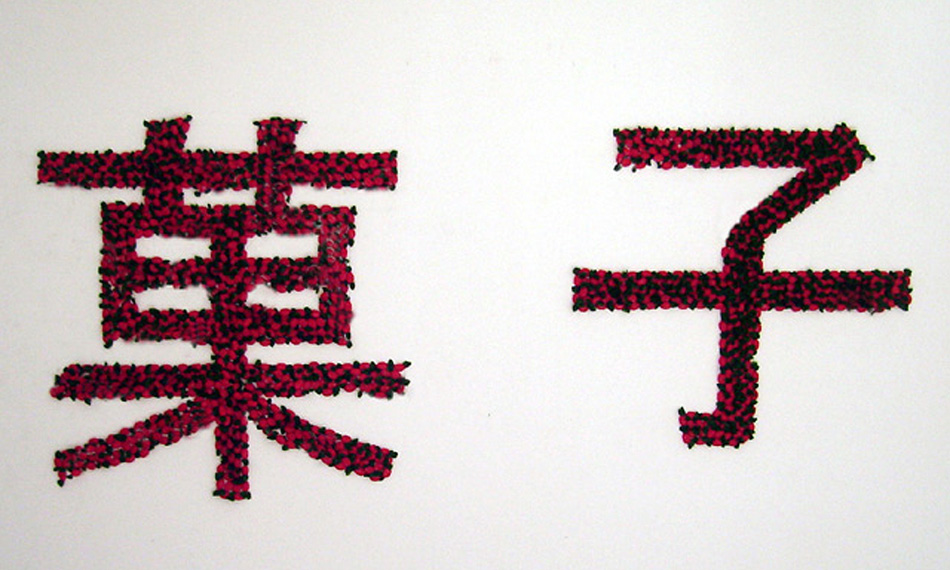
Perfect Language (菓子), 2006
1100 candies
40” x 66”
What do Plato, Dante Alighieri, Guillaume Postel, Raymond Lull, Giovanni Pico della Mirandola, Nicholas of Cusa, Giordano Bruno, Giulio Camillo, Athanasius Kircher, John Wilkins, Francis Lodwick, Leibniz, Giacomo Leopardi, Ludwik Zamenhof, Bertrand Russell, Ludwig Wittgenstein, Noam Chomsky and Pierre Lévy have all in common? They were all interested (or obsessed) in finding a perfect language. While many thinkers have argued about the possible existence of a perfect language, few have tried to find it. Some philosophers discovered it using symbols, logic, geometry or mathematics. Some linguists (and ophthalmologists) recalled old languages or shaped new ones, such as Esperanto.
After examining different models and explanations, Merhi came to the conclusion that a perfect language cannot be made out of words but common phyisical elements that can be recognized by any civilization from anywhere and anytime.
There are two historical figures that became crucial in the artist's research: Jonathan Swift and Ferdinand de Saussure. Saussere, who initiated Structuralism, affirmed that a sign is formed by the associative link between the signifier (the sound pattern of a word, either in mental projection — as when we silently recite lines from a poem to ourselves — or in actual, physical realization as part of a speech act) and the signified (the concept or meaning of the word.) Swift, best known for his masterpiece, Gulliver’s Travels, tells on Book III, Chapter 5 “..since words are only names for things, it would be more convenient for all men to carry about them such things as were necessary to express the particular business they are to discourse on… it would serve as an universal language to be understood in all civilized nations, whose goods and utensils are generally of the same kind, or nearly resembling, so that their uses might easily be comprehended.”
Both authors helped the artist to synthesize a novel approach to build a perfect language by employing the objects certain words denote. Thus, a perfect language functions as a metalanguage instead of a natural or formal language. In this case, Merhi used 1100 classic candies to depict the word candy (菓子) in Japanese. This work appeared in the movie “Elipsis”, distributed by 20th Century Fox in 2006.